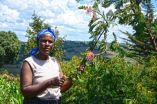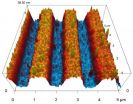(Press-News.org) UNSW scientists have developed a new evolutionary theory on why consuming a diet that is very low in nutrients extends lifespan in laboratory animals - research that could hold clues to promoting healthier ageing in humans.
Scientists have known for decades that severely restricted food intake reduces the incidence of diseases of old age, such as cancer, and increases lifespan.
"This effect has been demonstrated in laboratories around the world, in species ranging from yeast to flies to mice. There is also some evidence that it occurs in primates," says lead author, Dr Margo Adler, an evolutionary biologist at UNSW Australia.
The most widely accepted theory is that this effect evolved to improve survival during times of famine. "But we think that lifespan extension from dietary restriction is more likely to be a laboratory artefact," says Dr Adler.
Her study with UNSW's Associate Professor Russell Bonduriansky, is published in the journal BioEssays.
Lifespan extension is unlikely to occur in the wild, because dietary restriction compromises the immune system's ability to fight off disease and reduces the muscle strength necessary to flee a predator.
"Unlike in the benign conditions of the lab, most animals in the wild are killed young by parasites or predators," says Dr Adler.
"Since dietary restriction appears to extend lifespan in the lab by reducing old-age diseases, it is unlikely to have the same effect on wild animals, which generally don't live long enough to be affected by cancer and other late-life pathologies."
Dietary restriction, however, also leads to increased rates of cellular recycling and repair mechanisms in the body.
The UNSW researchers' new theory is that this effect evolved to help animals continue to reproduce when food is scarce; they require less food to survive because stored nutrients in the cells can be recycled and reused.
It is this effect that could account for the increased lifespan of laboratory animals on very low nutrient diets, because increased cellular recycling reduces deterioration and the risk of cancer.
"This is the most intriguing aspect, from a human health stand point. Although extended lifespan may simply be a side effect of dietary restriction, a better understanding of these cellular recycling mechanisms that drive the effect may hold the promise of longer, healthier lives for humans," Dr Adler says.
It may be possible in future, for example, to develop drugs that mimic this effect.
INFORMATION:
Video abstract: http://www.youtube.com/watch?v=KG2Etkr8Hek
Media contacts:
Dr Margo Adler (in New York): +1 917 780 9947, margo.adler@gmail.com
UNSW Science media: Deborah Smith, + 61 (2) 9385 7307, + 61 (0) 478 492 060, deborah.smith@unsw.edu.au
Less is more: New theory on why very low nutrient diets can extend lifespan
2014-03-18
ELSE PRESS RELEASES FROM THIS DATE:
Electronic media associated with poorer well-being in children
2014-03-18
Bottom Line: The use of electronic media, such as watching television, using computers and playing electronic games, was associated with poorer well-being in children.
Author: Trina Hinkley, Ph.D., of Deakin University, Melbourne, Australia, and colleagues.
Background: Using electronic media can be a sedentary behavior and sedentary behavior is associated with adverse health outcomes and may be detrimental at a very young age.
How the Study Was Conducted: The authors used data from the European Identification and Prevention of Dietary- and Lifestyle-Induced Health ...
COPD associated with increased risk for mild cognitive impairment
2014-03-18
Bottom Line: A diagnosis of chronic obstructive pulmonary disease (COPD) in older adults was associated with increased risk for mild cognitive impairment (MCI), especially MCI of skills other than memory, and the greatest risk was among patients who had COPD for more than five years.
Author: Balwinder Singh, M.D., M.S., of the Mayo Clinic, Rochester, Minn., and colleagues.
Background: COPD is an irreversible limitation of airflow into the lungs, usually caused by smoking. More than 13.5 million adults 25 years or older in the U.S. have COPD. Previous research has suggested ...
Global problem of fisheries bycatch needs global solutions
2014-03-18
SAN DIEGO, Calif. (March 17, 2014)—Whenever fishing vessels harvest fish, other animals can be accidentally caught or entangled in fishing gear as bycatch. Numerous strategies exist to prevent bycatch, but data have been lacking on the global scale of this issue. A new in-depth analysis of global bycatch data provides fisheries and the conservation community with the best information yet to help mitigate the ecological damage of bycatch and helps identify where mitigation measures are most needed.
"When we talk about fisheries' catch, we're talking about what fishers are ...
New hope for early detection of stomach cancer
2014-03-18
University of Adelaide research has provided new hope for the early detection of stomach cancer with the identification of four new biomarkers in the blood of human cancer patients.
Stomach or gastric cancer is the fourth most common cancer in the world and the second leading cause of death due to cancer.
"Stomach cancer is typically without symptoms in the early stages so most cancers are not diagnosed until the later stages, and the survival rates are therefore low," says Associate Professor Peter Hoffmann, project leader and Director of the University's Adelaide ...
Chicken bones tell true story of Pacific migration
2014-03-18
Did the Polynesians beat Columbus to South America? Not according to the tale of migration uncovered by analysis of ancient DNA from chicken bones recovered in archaeological digs across the Pacific.
The ancient DNA has been used to study the origins and dispersal of ancestral Polynesian chickens, reconstructing the early migrations of people and the animals they carried with them.
The study, led by the University of Adelaide's Australian Centre for Ancient DNA (ACAD) and published today in Proceedings of the National Academy of Sciences USA, reveals that previous claims ...
Hubble revisits the Monkey Head Nebula for 24th birthday snap
2014-03-18
To celebrate its 24th year in orbit, the NASA/ESA Hubble Space Telescope has released a beautiful new image of part of NGC 2174, also known as the Monkey Head Nebula. This colourful region is filled with young stars embedded within bright wisps of cosmic gas and dust.
NGC 2174 lies about 6400 light-years away in the constellation of Orion (The Hunter). Hubble previously viewed this part of the sky back in 2001, creating a stunning image released in 2011, and the space telescope has now revisited the region to celebrate its 24th year of operation.
Nebulae are a favourite ...
Crop intensification and organic fertilizers can be a long-term solution to perennial food shortages in Africa
2014-03-18
Farmers in Africa can increase their food production if they avoid over dependence on chemical fertilizers, pesticides and practice agricultural intensification - growing more food on the same amount of land – using natural and resource-conserving approaches such as agroforestry.
According to scientists at the World Agroforestry Centre (ICRAF), crop production in Africa is seriously hampered by the degradation of soil fertility, water and biodiversity resources. Currently, yields for important cereals such as maize have stagnated at 1 tone per hectare. Climate change ...
Researchers change coercivity of material by patterning surface
2014-03-18
Researchers from North Carolina State University have found a way to reduce the coercivity of nickel ferrite (NFO) thin films by as much as 80 percent by patterning the surface of the material, opening the door to more energy efficient high-frequency electronics, such as sensors, microwave devices and antennas.
"This technique reduces coercivity, which will allow devices to operate more efficiently, reducing energy use and improving device performance," says Goran Rasic, a Ph.D. student at NC State and lead author of a paper describing the work. "We did this work on NFO ...
New research links body clocks to chronic lung diseases
2014-03-18
The body clock's natural rhythm could be utilized to improve current therapies to delay the onset of chronic lung diseases.
Scientists at The University of Manchester have discovered a rhythmic defence pathway in the lung controlled by our body clocks, which is essential to combat daily exposure to toxins and pollutants.
Internal biological timers (circadian clocks) are found in almost all living things driving diverse processes such as sleep/wake cycles in humans to leaf movement in plants. In mammals including humans, circadian clocks are found in most cells and ...
Earthquakes caused by clogged magma a warning sign of eruption, study shows
2014-03-18
New research in Geophysical Research Letters examines earthquake swarms caused by mounting volcanic pressure which may signal an imminent eruption. The research team studied Augustine Volcano in Alaska which erupted in 2006 and found that precursory earthquakes were caused by a block in the lava flow.
36 hours before the first magmatic explosions, a swarm of 54 earthquakes was detected across the 13-station seismic network on Augustine Island. By analyzing the resulting seismic waves, the authors found that the earthquakes were being triggered from sources within the ...




